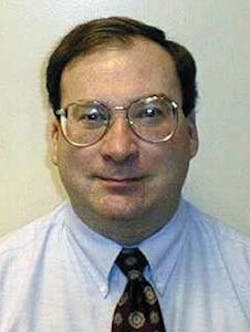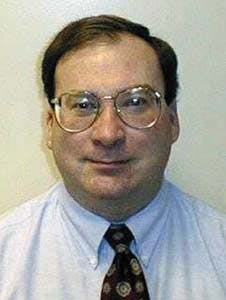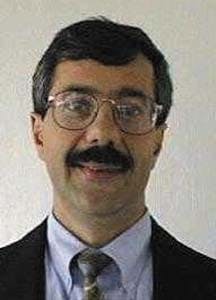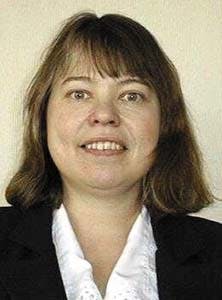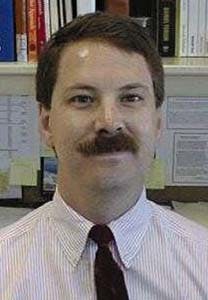Catalytic hydroprocessing a good alternative to solvent processing
Terry E. Helton, Thomas F. Degnan Jr.,Hydroprocessing technologies offer catalytic routes to improve lube plant operations.
Dominick N. Mazzone,Mary P. McGuiness,
Tim L. Hilbert,Rick C. Dougherty
Mobil Technology Co.
Paulsboro, N.J.
Faced with pressures to reduce process costs and improve base-oil quality, Mobil Oil Corp. has developed several hydroprocessing catalysts as an alternative to conventional solvent processing:1 Mobil lube dewaxing (MLDW), Mobil selective dewaxing (MSDW), and Mobil wax isomerization (MWI) catalysts.
This article is the last of three that cover Mobil's lube technologies. The first discussed Mobil's compositional monitoring approach to predict lube-oil qualities; the second reviewed its company lube processes and commercial examples.
Cycle length no longer appears to be a concern for lube hydroprocessing and dewaxing. MLDW catalysts can sustain a year or more between hydrogen reactivations and 4 years between oxygen regenerations. The isomerization dewaxing catalysts also require very infrequent regeneration because they contain strong metal functions. These lengthened-catalyst cycles help make the catalytic hydroprocessing route preferable to solvent processing.
MLDW
Mobil developed the MLDW process in the mid-1970s to reduce its dependence on solvent dewaxing. The novel ZSM-5 zeolite, a medium-pore zeolite discovered in the late 1960s and patented by Mobil in 1972, 2 is capable of shape-selective dewaxing. It selectively cracks linear instead of branched paraffins.The intersecting two-dimensional pore system of ZSM-5 and its specific pore dimensions (5.3 x 5.6 Å in the straight channel; 5.1 x 5.5 Å in the sinusoidal channel) provide a balance of reactant-shape selectivity, reduced coking propensity, and resistance to poisoning by bulky nitrogen compounds.
ZSM-5 was selected as the catalytic platform for the MLDW process. Its channel system, pore dimensions, and versatility in changing physicochemical properties enables effective dewaxing of a full range of lube base-oil viscosity grades-from spindle oil to bright stock.3
Commercialized in 1981 at Mobil's Adelaide, Australia, refinery, the MLDW process is an alternative to solvent dewaxing.4-5 The process can handle a wide range of feedstocks and produces high-octane gasoline and LPG by cracking the normal and slightly branched paraffins.
Compared to solvent dewaxing, MLDW removes more paraffins to reach the same pour point. Therefore, although the yields are normally less than those found with solvent dewaxing, the low pour-point viscometrics are better. This is especially true for lighter stocks.
The cost advantages associated with elimination of solvent processing more than compensate for the lower lube yields. Capital and utility costs of the MLDW process are about 80-85% of solvent dewaxing.
Because paraffins are high viscosity index (VI), low-viscosity compounds, the catalytically dewaxed products from light and heavy neutral stocks have higher viscosity and lower VIs than those obtained from solvent dewaxing the same feed.4 6 The exception is bright stock, in which MLDW is much more selective for removing microcrystalline wax than is solvent dewaxing.
Catalytic chemistry
The fundamentals of the catalytic chemistry in the MLDW process are shown in Fig. 1 [175,780 bytes]. ZSM-5 admits the higher pour point straight chain paraffins, slightly branched paraffins containing methyl groups as side chains, and long-chain monoalkylated benzenes into its pores. The zeolite excludes the lower pour-point, highly branched paraffins; polycyclic cycloparaffins (naphthenes); and aromatics.Through hydride abstraction or reaction with a protonated, lower-molecular-weight olefin, the paraffins and alkyl side chains of the monoalkylated benzene are converted to carbenium ions. Cracking of the carbenium ion occurs through skeletal isomerization followed by beta-scission. Skeletal isomerization is believed to occur through a protonated cyclopropane (PCP) mechanism.
The cracked products diffuse out of the pores of the zeolite and into the larger pores of the catalyst binder system and eventually into the bulk liquid or gas. Alternatively, the cracked products can continue to react to produce lower molecular-weight products or, at fairly high temperatures, aromatics and coke.
Coke is precluded from forming in ZSM-5 because of its particular pore structure. Most of the coke forms outside of the zeolite. This allows the ZSM-5 to have a much longer cycle length than other, larger pore zeolites in this type of service.
The cracked products are primarily lower molecular-weight paraffins, olefins, and alkylbenzenes. Approximately 50 wt % of the cracked products are C5- compounds. The remaining half consists of materials in the gasoline molecular-weight range. Left unhydrotreated, this fraction has a fairly high octane number because of its high isoparaffin and olefin content. A post-hydrotreating step for the lube can improve product color and remove any trace olefins.
Over the past 16 years, Mobil has introduced four major ZSM-5 based MLDW catalyst families: MLDW-1, MLDW-2, MLDW-3, and MLDW-4. Each catalyst was better in performance than its predecessor, and in several cases, an advance in product quality.
MLDW-1 and 2 catalysts
The initial catalyst introduced in 1981, MLDW-1, had adequate performance. Cycle lengths at the Paulsboro, N.J., unit were about 4-6 weeks. Activity was restored between cycles via hydrogen reactivation at high temperatures. A lengthier air regeneration was required to completely clean-burn the catalyst when cycle lengths fell to less than 2 weeks. 7The MLDW-2 catalyst has better diffusivity and greater resistance to feed poisons than MLDW-1. It was introduced at Mobil's Paulsboro unit in 1992. This catalyst provided cycle lengths that were about three times that of the original MLDW-1 catalyst. Like its predecessor, MLDW-2 could be easily hydrogen-reactivated at elevated temperatures. This catalyst reduced downtime and reduced power consumption because oxygen or air regeneration was needed infrequently.
MLDW-3 catalyst
Improvements on the MLDW-2 catalyst activity and a fundamental change in the formulation led to commercialization of the MLDW-3 catalyst in 1992. This catalyst was installed in Mobil's Adelaide, Australia, unit in 1993 and in Mobil's Paulsboro MLDW unit in 1995. Commercial performance in these two units resulted in extended cycle lengths between hydrogen reactivations by a factor of two.One of the largest benefits, however, was that the catalyst produced products with improved oxidative stability. Turbine oil stability tests (TOST, ASTM D943) on products produced with this catalyst demonstrated that their oxidative stabilities were at least equivalent to that of solvent-dewaxed oils (Table 1 [21,824 bytes]).
The initial fill at Paulsboro ran for 1,000 days without requiring an air regeneration.
MLDW-4 catalyst
In 1996, the MLDW-4 catalyst was commercialized at Mobil's Adelaide, Australia, refinery and at Mobil's Gravenchon, France, lube plant. It is also being installed in several licensees' units.Like its predecessors, it has further extended the cycle length between hydrogen reactivations. This catalyst also extends cycle length by providing for a lower start-of-cycle temperature and a higher end-of-cycle temperature. It is now possible to consider running the dewaxing reactors for at least a year between hydrogen reactivations.
Fig. 2 [39,517 bytes] provides a cycle length comparison of the four dewaxing catalyst technologies.
MSDW
The industry's trend towards hydroprocessed stocks for greater feedstock versatility 8-10 has spurred the development of new catalytic-dewaxing processes designed around isomerization followed by cracking, rather than cracking alone.Hydroprocessed stocks not only contain very low sulfur and nitrogen levels, but have far fewer coke precursors than solvent-refined feeds. These "cleaner" feeds allow the use of more highly shape-selective zeolites downstream of the hydrotreating or hydrocracking catalyst. The improved selectivity for wax conversion results in higher lube yields and VIs than does MLDW.11 12
Isomerization requires a significantly different catalyst than the MLDW process. The preferred catalysts are bifunctional in nature. They contain both a strong metal function and an accompanying acid function that has been tailored to balance the metal function.
Catalytic chemistry
The MSDW reaction chemistry follows the classical bifunctional-paraffin isomerization and cracking mechanism involving olefinic intermediates. 11 This is illustrated in Fig. 3 [92,108 bytes]. Long-chain normal paraffins are dehydrogenated over a strong metal function to form linear olefins. The olefins diffuse to the acid sites where they are protonated to form carbenium ions. Skeletal isomerization of these carbenium ions occurs quickly within the pores of the zeolite. The degree of branching and the length of the side chains, however, are closely controlled by the pore geometry of the zeolite.The isomerized carbenium ions donate protons back to the zeolite, crack through beta-scission to lower molecular weight products, or transfer the protons to another olefin. The olefins resulting from the carbenium ion are then hydrogenated over the same strong metal function used for the dehydrogenation reaction.
The yield of lighter products is much less than that obtained in the case of a strong acid function (for example, in MLDW) because the cracked olefins are rapidly hydrogenated, which reduces the extent of secondary cracking. There is also evidence for additional aromatics hydrogenation over the strong metal function.
Catalyst deactivation is normally slow because the strong metal function reduces the tendency for coke to form on the zeolite or on the surface of the catalyst itself. The tolerance of the catalyst for heteroatoms is highly dependent on the nature of the zeolite and on the metals that are used. Normally, the heteroatoms are desorbed at elevated temperatures, and the metal function can assist in this desorption.
Although oxygen regeneration is infrequently required, regeneration of these bifunctional catalysts is more difficult than in the case of MLDW catalysts because proper attention must be given to the dispersion and location of the metal function.
Mobil's research and development of bifunctional catalysts has produced a series of selective-isomerization, lube-dewaxing catalysts.
MSDW-1
The MSDW-1 catalyst is ideally suited for handling waxy hydroprocessed and hydrocracked feedstocks.MSDW catalysts contain a constrained medium-pore zeolite with a strong metal function that balances the cracking activity of the zeolite. The advantages for MSDW over solvent dewaxing are greatest for waxy feeds because the MSDW-1 catalyst converts a substantial fraction of the wax to lube by hydroisomerization.
The MSDW-1 catalyst has a pore system that is considerably more constrained than ZSM-5. It was specifically developed for processing light and heavy neutral hydroprocessed stocks.
The MSDW-1 catalyst was installed in Mobil's Jurong refinery in May 1997. Its commercial performance has exceeded targets developed in extensive pilot plant trials. The VI was as expected, and lube yields were 2% better than expected.
The catalyst is expected to have a cycle length of at least 3 years.
Table 2 [41,120 bytes] compares MSDW-1 and MLDW-3 yields and product properties.
MSDW-2
Mobil modified the nature of the acid function in the MSDW-1 catalyst to improve performance. Mobil also improved the method to incorporate the metal function and to optimize its activity. These innovations came too late to incorporate catalyst changes for the Jurong 1997 start-up.An extensive pilot plant confirmed the reproducibility of the catalyst preparations and the VI and yield advantages of the improved catalyst. The MSDW-2 catalyst has distinctly better isomerization selectivity than its MSDW-1 predecessor. This has resulted in higher yields and VIs for a wide viscosity range of hydroprocessed stocks.
Fig. 4 [51,903 bytes] compares the 650° F.+ oil yield vs. dewaxed-oil pour point obtained in processing the same heavy neutral slack wax over the MSDW-1 and MSDW-2 catalysts. These data confirm that substantially higher product yields are obtained at the same pour point with the MSDW-2 catalyst. The MSDW-2 catalyst also provides a higher VI in addition to a higher oil yield at equivalent pour points.
The largest MSDW-2 benefit has been observed in processing light neutral stocks. Fig. 5 [41,247 bytes] compares the dewaxed product lube yield and VI data for a hydrocracked heavy neutral stock that has been processed by solvent dewaxing and catalytic dewaxing over MSDW-1 and MSDW-2 catalysts. The MSDW-2 catalyst shows a slight, yet pronounced advantage over the MSDW-1 catalyst and a marked improvement over the solvent dewaxing case.
The same comparison is made for a hydrocracked light neutral in Fig. 6 [41,899 bytes]. In this comparison the same ranking applies, but the performance difference is much greater between the MSDW-2 and MSDW-1 catalysts, particularly between the MSDW-2 catalyst and the solvent dewaxing case. This reflects the paraffin isomerization selectivity and lower cracking selectivity of this new catalyst.
The MSDW-2 catalyst activity is equivalent to that of the MSDW-1 catalyst and it operates under equivalent conditions. MSDW-2 cracks far fewer paraffins and produces substantially higher levels of high VI and low pour point, slightly branched paraffins.
The MSDW-2 catalyst is in the final stages of development and will be commercialized during the first quarter of 1998. The catalyst is slated to be used in the next complete fill for Mobil's Jurong lube dewaxing reactor.
MWI
The Mobil wax isomerization (MWI) catalyst and accompanying process were developed to convert high wax-content streams, such as slack wax, into very high viscosity-index lubes. The original MWI process was configured to run at partial-wax conversion.The original MWI process used a Mobil-developed zeolite catalyst to saturate residual aromatics, isomerize paraffins, and open some naphthene rings. A solvent-dewaxing step was used downstream of the MWI unit to remove any remaining normal paraffins and reduce the pour point to specifications.
Mobil has reported on the properties of MWI products produced from 150N (150 neutral) and 500N slack wax from hydrocracked distillates with low oil contents.8 These are given in Table 3 [32,695 bytes].
Recently, the MWI process has been refined so that a highly selective catalytic-isomerization dewaxing step can be used in place of the solvent-dewaxing step. This catalytic-isomerization dewaxing step is at least equivalent to solvent dewaxing in its ability to produce very low pour points and very high VIs from high wax-content feedstocks. The high-quality lubes produced by the MWI catalyst system bridge the gap between conventional mineral-based lubes and synthetic lubes.
The MWI catalyst system can process a wide range of feedstocks from light neutrals to bright stocks. In addition to the feedstock flexibility, the MWI process can convert low oil containing slack waxes and deoiled waxes very selectively to high quality lubricating oils with very high VIs at high yields.
Catalytic chemistry
The same bifunctional-catalyzed paraffin-isomerization mechanism shown in Fig. 3 is the basis for the catalytic MWI process. The principal difference between the MSDW and MWI processes is that the wax content is higher in the latter, and there is a larger demand on the metal function. Heteroatom content, however, is low, which allows for the use of more of the metal sites. Both catalyst systems are designed to isomerize the wax.The acid function must also be tailored to further reduce the degree of cracking. Fig. 7 [66,337 bytes] shows the chromatogram of a wax before and after processing over an MWI catalyst system. The normal paraffin peaks (the sharp peaks) are completely removed, and the boiling point curve is shifted to the left, denoting the lower boiling range of the isomerized long chain paraffins.
MWI-1
The MWI-1 catalyst is a system consisting of two different catalysts. Both catalysts have been commercially proven. The highly selective dewaxing catalyst is used in a separate reactor and takes the place of the solvent dewaxing unit in the original MWI design.MWI-2
The MWI-2 catalyst can very effectively handle pure waxes. It is able, for example, to isomerize 100% wax and produce high yields of exceptionally low pour point oils. Product yield, VI, and kinematic viscosity data are provided in Fig. 8 [59,940 bytes] for a deoiled wax processed over MWI-2 catalyst. Pilot plant data (Fig. 9 [39,722 bytes]) show that this catalyst is exceptionally stable even at low pressures.Product properties from the processing of a lighter deoiled-wax feedstock over the MWI-2 catalyst are shown in Table 4 [33,369 bytes] .
References
- Sequeria Jr., A., Lubricant Base Oil and Wax Processing, Marcel Dekker, NY, 1994, p. 194.
- Argauer, R.J., and Landolt, G.R., U.S. Patent 3,702,886, Nov. 13, 1972.
- Sarli, M.S., and Bortz, R.W., "Manufacture of Transformer Oil via the Mobil Lube Dewaxing Process," Paper FL-91-109, NPRA, National Fuels and Lubricants Meeting, Houston, 1991.
- Ramage, M.P., Graziani, K.R., and Katzer, J.R., "Science and Application of Catalytic Lube Oil Dewaxing," Japanese Petroleum Institute Meeting, Tokyo, Oct. 27-28, 1986.
- Smith, C.M., McCarthy, S.J., and Smith, F.A., Hydrocarbon Asia, November/December 1994, p. 57.
- Smith, F.A.. and Wang, H.A., Hydrocarbon Asia, September 1995.
- Chen, N.Y., Degnan, T.F., and Lutner, J.D., "The Deactivation of ZSM-5 in Catalytic Dewaxing," Catalyst Deactivation 1991, Elsevier, pp. 773-82.
- Baker, C.L., and McGuiness, M.P., "Mobil Lube Dewaxing Technologies," NPRA Annual Meeting, San Francisco, Paper AM-95-56, 1995.
- Wilkinson, P., and Yates, N.C., "Very High Viscosity Index Base Stocks," NPRA Annual Meeting, Mar. 17-19, 1991.
- Zakarian, J.A., Robson, R.J., and Farrell, T.R., "All-Hydroprocessing Route for High-VI Lubes," AIChE Spring National Meeting, New Orleans, Apr. 6-10, 1986.
- Coonradt, H.L., and Garwood, W.E., Industrial and Engineering Chemistry Process Design and Development, Vol. 3, No. 38, 1964.
- Chen, N.Y., Garwood, W.E., and Dwyer, F.G., Shape Selective Catalysis in Industrial Applications, 2nd ed., Marcel Dekker, New York, 1996.
The Authors
Terry E. Helton is an advanced senior engineer in the catalyst technology department of Mobil Technology Co. Since 1991, he has been involved in the development of refining and chemical catalysts within Mobil. Helton holds a PhD in chemical engineering from Texas A&M University.
Thomas F. Degnan Jr. is manager of catalyst technology for Mobil Technology Co. He has over 100 patents and publications.
Degnan holds a BS in chemical engineering from the University of Notre Dame and a PhD in chemical engineering from the University of Delaware.
Dominick N. Mazzone is a skill leader in the special products area of Mobil Technology Co. Mazzone has done significant work in both the catalyst and process areas of lube dewaxing and hydrocracking. Mazzone holds a BS in chemistry from Brooklyn College and an ME and PhD from the City College of the City University of New York.
Mary P. McGuiness is a licensing manager in the lube technology area for Mobil Technology Co. Much of her 18 years' experience has been in the catalytic dewaxing area, in which she was a skill leader. She also has worked in catalytic reforming.
McGuiness holds a BS and MS in chemical engineering from Drexel University.
Tim L. Hilbert is a licensing manager in the lube technology area for Mobil Technology Co. He has spent most of his 18 years with Mobil in the hydroprocessing area, and has been a skill leader in that area.
Hilbert holds a BS in chemical engineering from Drexel University and an MS in chemical engineering from the University of Pennsylvania.
Rick C. Dougherty is the skill leader for catalytic lubes processing research and engineering at Mobil Technology Co. He has 13 years of experience in lubricant base-oil refining and product formulation. Dougherty holds a PhD in chemical engineering from Drexel University.
Copyright 1998 Oil & Gas Journal. All Rights Reserved.
